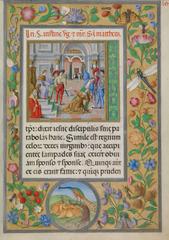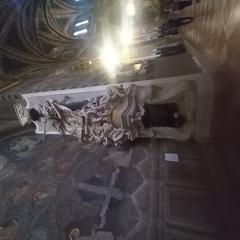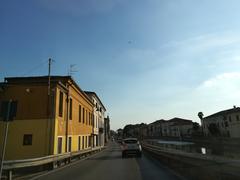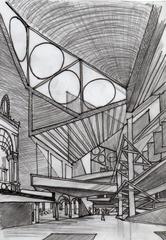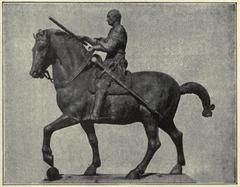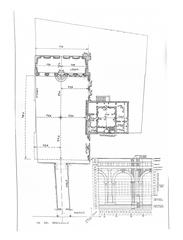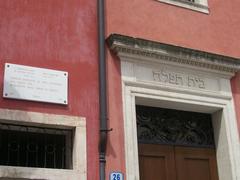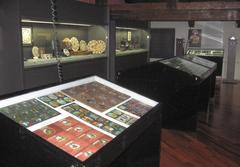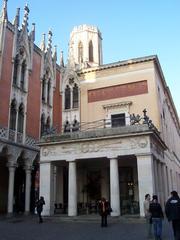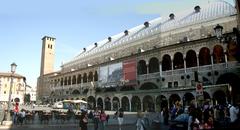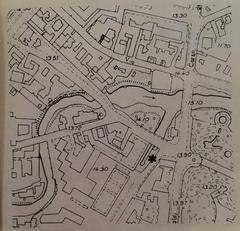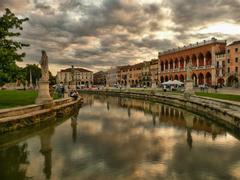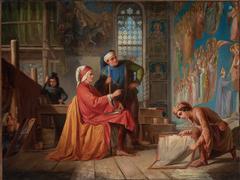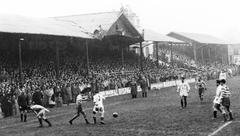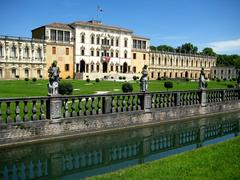Memoria e Luce Visiting Hours, Tickets, and Comprehensive Guide to Padua Historical Sites
Date: 14/06/2025
Introduction
Situated in the vibrant city of Padua, Italy, the Memoria e Luce memorial stands as a powerful tribute to the victims of the September 11, 2001 attacks. Designed by acclaimed architect Daniel Libeskind, the monument not only commemorates the tragedy but also symbolizes universal values of peace, resilience, and intercultural dialogue. This guide provides a detailed overview of the memorial’s origins, design, visitor information—including visiting hours and ticket details—accessibility, travel tips, and recommendations for exploring nearby historical sites in Padua.
For further insights into the memorial’s design and significance, refer to Padova Oggi, Libeskind Studio, and Academia.edu.
Table of Contents
- Introduction
- Historical Background and Genesis of the Memorial
- Design and Symbolism
- Visiting Information: Hours, Tickets, and Directions
- Accessibility and Amenities
- Integration with Padua Historical Sites
- Travel Tips and Best Practices
- Frequently Asked Questions (FAQ)
- Conclusion
- References
Historical Background and Genesis of the Memorial
The September 11 Attacks and Global Response
The September 11 attacks in 2001 profoundly impacted the world, prompting international solidarity. Italy, with its deep ties to the United States, responded by establishing memorials and fostering dialogue about peace and resilience. Padua, recognized for its academic and cultural heritage, was chosen as the site for a European monument to honor the victims and promote intercultural understanding (Padova Oggi).
Concept and Site Selection
In the wake of the attacks, Padua’s local authorities and cultural organizations collaborated to create a memorial that would serve as a place of mourning, remembrance, and hope. The site—adjacent to Padua’s main railway station and along the historic Piovego canal—was selected for its accessibility and visibility, ensuring the memorial would become a part of the city’s daily rhythm (Comune di Padova).
Design and Symbolism
Daniel Libeskind’s Vision
Daniel Libeskind, renowned for his emotionally resonant architectural language, designed the memorial to resemble an open book—symbolizing history, knowledge, and the ongoing story of humanity. The structure is composed of satin-finished glass walls rising up to 17 meters high, intersected by a six-meter-long steel beam salvaged from the World Trade Center wreckage (Libeskind Studio; Una Goccia di Colore).
Symbolic Elements
- The Glass Book: Represents transparency, fragility, and the delicate nature of memory. The glass changes in appearance with the light, reinforcing the idea of remembrance and hope (Divisare).
- World Trade Center Steel Beam: Embedded within the glass walls, this artifact is a tangible link to the tragedy and a testament to resilience (Academia.edu).
- Light and Illumination: The memorial’s interplay with natural and artificial light symbolizes hope, freedom, and the enduring spirit of humanity.
- Urban Integration: The modern design creates a dialogue with Padua’s historic surroundings, blending the site’s legacy with contemporary significance.
Visiting Information: Hours, Tickets, and Directions
Location
Memoria e Luce is located at Piazzale della Stazione/Via Giotto, a short walk from Padua’s main railway station and near the historic city center (minube.it).
Visiting Hours and Tickets
- Hours: The memorial is open daily, accessible from early morning (7:00 am) to late evening (9:30 pm). It is illuminated at dusk, offering a particularly striking visual experience (Turismo Padova).
- Tickets: No admission fee or tickets are required; the site is free and open to the public at all times.
Getting There
- By Train: Located adjacent to Padua’s main railway station, the memorial is easily accessible for travelers arriving by regional or national train.
- By Bus/Tram: Multiple city bus lines and the tram network stop at or near the station.
- By Foot or Bicycle: The memorial is a short walk or bike ride from the city center, with clear signage and dedicated paths (Padua Erleben).
Accessibility and Amenities
- Wheelchair Accessibility: The site features step-free paths, ramps, and smooth surfaces, making it fully accessible for visitors with limited mobility.
- Nearby Facilities: The railway station area offers cafés, restaurants, public restrooms, hotels, and tourist information. Bike racks and parking facilities are also available.
- Safety: The area is well-lit and monitored for security, ensuring a safe environment for visitors at all hours.
Integration with Padua Historical Sites
Memoria e Luce is ideally located for inclusion in a broader exploration of Padua’s historical treasures. Nearby sites include:
- Scrovegni Chapel: Home to Giotto’s renowned frescoes, just a few minutes’ walk from the memorial.
- University of Padua: One of Europe’s oldest universities, representing the city’s deep academic legacy.
- Botanical Garden (Orto Botanico): A UNESCO World Heritage site.
- Piazza delle Erbe and Piazza della Frutta: Historic squares with vibrant markets, close to the memorial.
For more on Padua’s cultural highlights, visit Italy Heaven.
Travel Tips and Best Practices
- Best Times to Visit: Early morning or dusk for a tranquil atmosphere and to witness the memorial’s illumination.
- Photography: The pedestrian bridge over the canal offers excellent photo opportunities.
- Etiquette: Maintain respectful conduct as the site is a place of remembrance.
- Commemorative Events: Annual ceremonies are held on September 11, often featuring dignitaries and public participation (Atlas Obscura).
Frequently Asked Questions (FAQ)
Q: What are the visiting hours for Memoria e Luce?
A: Open daily from 7:00 am to 9:30 pm (recommended for full experience with illumination).
Q: Is there an admission fee or do I need tickets?
A: No, the memorial is free and open to all visitors.
Q: How do I get to the memorial from the train station?
A: It is located less than 200 meters from Padua’s main railway station, easily accessible on foot.
Q: Is the site accessible for people with disabilities?
A: Yes, the memorial is fully accessible, with step-free paths and ramps.
Q: Are guided tours available?
A: While the site does not offer official tours, many local operators include it in their city walking tours (Turismo Padova).
Conclusion
Memoria e Luce is a landmark of remembrance, resilience, and intercultural dialogue in Padua. Its accessible location, thoughtful design, and integration with the city’s rich historical context make it an essential destination for visitors and locals alike. Whether you are reflecting on global events, exploring Padua’s cultural treasures, or seeking architectural inspiration, Memoria e Luce offers a profound and moving experience.
To enrich your visit, consider combining the memorial with nearby historical sites, participating in commemorative events, and utilizing local tourist resources. For the latest updates and travel tips, download the Audiala app and follow our social channels.
References
- Padova Oggi
- Una Goccia di Colore
- Academia.edu
- minube.it
- My Corner of Italy
- Turismo Padova
- Libeskind Studio
- 911lesson.org
- Atlas Obscura
- Comune di Padova
- Italy Heaven
- Padua Erleben
- Divisare
- Il Miraggio
